Development of Semantic Web-Enabled BDI Multi-Agent Systems Using SEA_ML: An Electronic Bartering Case Study
Abstract
1. Introduction
2. SEA_ML-Based MAS Development Methodology
2.1. MAS Analysis and Design
2.2. Transformation and Implementation
3. E-barter Case Study
3.1. System Analysis and Design with SEA_ML
3.1.1. System Analysis with MAS and Organization Viewpoint
3.1.2. MAS Design by Modeling in SEA_ML
3.2. System Implementation with Model Transformations and Delta Code Development
3.2.1. Model Transformations
The Generated Codes in the Target Language Environment
3.2.2. Delta Code Development
3.2.2.1. Delta Code for MAS Part of the E-barter System
3.2.2.2. Delta Code for SWS Part of the E-barter System
4. Demonstration Scenario
5. Related Work
6. Discussion and Conclusions
Author Contributions
Acknowledgements
Conflicts of Interest
Appendix A. Descriptions of Selected SEA_ML Concepts
| Icon. | Concept | Description |
|---|---|---|
 | Semantic Web Agent (SWA) | Semantic web agent in the SEA_ML stands for each agent which is a member of semantic web-enabled MAS. It is an autonomous entity which can interact with both the other agents and the semantic web services, within the environment. |
 | Semantic service matchmaker agent (SSMatchmakerAgent) | It is a SWA extension. This meta-element represents matchmaker agents which store the SWS’ capabilities list in a MAS and compare it with the service capabilities required by the other agents, in order to match them. |
 | Belief | Beliefs represent the informational state of the agent, in other words its knowledge about the world (including itself and other agents). |
 | Goal | A goal is a desire that has been adopted for active pursuit by the agent. |
 | Role | An agent plays different roles to realize different behaviors in various situations, such as organizations, or domains. |
 | Capability | Taking BDI agents into consideration, there is an entity called Capability which includes each agent’s Goals, Plans and Beliefs about the surroundings. |
 | Fact | The statement about the agent’s environment which can be true. Agents can decide based on these facts. |
 | Plan | Plans are sequences of actions that an agent can perform to achieve one or more of its intentions. |
 | Semantic service register plan (SS_RegisterPlan) | The Semantic Service Register Plan (SS_RegisterPlan) is the plan used to register a new SWS by SSMatchmakerAgent. |
 | Semantic service finder plan (SS_FinderPlan) | Semantic Service Finder Plan (SS_FinderPlan) is a Plan in which automatic discovery of the candidate semantic web services take place with the help of the SSMatchmakerAgent. |
 | Semantic service agreement plan (SS_AgreementPlan) | Semantic Service Agreement Plan (SS_AgreementPlan) is a concept that deals with negotiations on quality of service (QoS) metrics (e.g., service execution cost, duration and position) and contract negotiation. |
 | Semantic service executor plan (SS_ExecutorPlan) | After service discovery and negotiation, the agent applies the Semantic Service Executor Plan (SS_ExecutorPlan) to invoke appropriate semantic web services. |
 | Send | An action to transmit a message from an agent to another. This can be based on some standard such as FIPA_Contract_Net |
 | Receive | An action to collect a message from an agent. This can be based on some standard such as FIPA_Contract_Net |
 | Task | Tasks are groups of actions which are constructing a plan in an agent. |
 | Action | An action is an atomic instruction which constitutes a task. |
 | Message | A package of information to be send from an agent to another; possibly to deliver some information or instructions. Two special types of actions, namely Send and Receive, are used to handle these messages. |
 | Agent state | This concept refers to certain conditions in which agents are present at certain times. An agent can only have one state (Agent State) at a time, e.g., waiting state in which the agent is passive and waiting for another agent or resource. |
 | Resource | It refers to the system resources that the MAS is interacting with. For example, the database. |
 | Service | Any computer-based service presented to the users. |
 | Web Service | Type of service which is presented via web. |
 | Semantic Web Service | Semantically defined web services which can be interpreted by machines. |
 | Process | It describes how the SWS is used by defining a process model. Instances of the SWS use the process via described_by to refer to the service’s ServiceModel. |
 | Interface | This document describes what the service provides for prospective clients. This is used to advertise the service, and to capture this perspective, each instance of the class Service presents a Service Interface. |
 | Grounding | In this document, it is described how an agent interact with the SWS. A grounding provides the needed details about transport protocols. Instances of the class Service have a supports property referring to a Service Grounding. |
 | Input | Defines the inputs for processes and interfaces of a SWS. |
 | Output | Defines the output for processes and interfaces of a SWS. |
 | Precondition | Defines the pre-conditions for processes and interfaces of a SWS. |
 | Effect | Defines the post-conditions or effects for processes and interfaces of a SWS. |
 | Semantic web organization | Refers to an organized group of semantic web agents (SWAs). |
 | Interaction | For communication and collaboration of agents, they can use series of messages via a message sequence which results to an agent interaction. |
 | Environment | The agent’s surroundings including digitized resources, fact, and services. |
 | Registration Role | A specialized type of architectural role which is used to register SWSs in the multi agent systems. |
 | Behavior | In re-active agents, a behavior is a re-action of an agent towards an external or internal stimulus. |
 | Agent type | The agents in a multi-agent system can have different types taking various responsivities and representing various stakeholders. |
References
- Wooldridge, M.; Jennings, N.R. Intelligent agents: Theory and practice. Knowl. Eng. Rev. 1995, 10, 115–152. [Google Scholar] [CrossRef]
- Kardas, G.; Goknil, A.; Dikenelli, O.; Topaloglu, N.Y. Model Driven Development of Semantic Web Enabled Multi-agent Systems. Int. J. Coop. Inf. Syst. 2009, 18, 261–308. [Google Scholar] [CrossRef]
- Berners-Lee, T.; Hendler, J.; Lassila, O. The Semantic Web. Sci. Am. 2001, 284, 34–43. [Google Scholar] [CrossRef]
- Shadbolt, N.; Hall, W.; Berners-Lee, T. The Semantic Web Revisited. IEEE Intell. Syst. 2006, 21, 96–101. [Google Scholar] [CrossRef]
- Mernik, M.; Heering, J.; Sloane, A. When and how to develop domain-specific languages. ACM Comput. Surv. 2005, 37, 316–344. [Google Scholar] [CrossRef]
- Fowler, M. Domain-Specific Languages; Addison-Wesley Professional: Boston, MA, USA, 2001; pp. 1–640. [Google Scholar]
- Kardas, G.; Gomez-Sanz, J.J. Special issue on model-driven engineering of multi-agent systems in theory and practice. Comput. Lang. Syst. Struct. 2017, 50, 140–141. [Google Scholar] [CrossRef]
- Omicini, A.; Ricci, A.; Viroli, M. Artifacts in the A&A meta-model for multi-agent systems. Autonom. Agents Multi-Agent Syst. 2008, 17, 432–456. [Google Scholar]
- Beydoun, G.; Low, G.C.; Henderson-Sellers, B.; Mouratidis, H.; Gomez-Sanz, J.J.; Pavon, J.; Gonzalez-Perez, C. FAML: A Generic Metamodel for MAS Development. IEEE Trans. Softw. Eng. 2009, 35, 841–863. [Google Scholar] [CrossRef]
- Garcia-Magarino, I. Towards the integration of the agent-oriented modeling diversity with a powertype-based language. Comput. Stand. Interfaces 2014, 36, 941–952. [Google Scholar] [CrossRef]
- Hahn, C. A Domain Specific Modeling Language for Multiagent Systems. In Proceedings of the 7th International Conference on Autonomous Agents and Multi-Agent Systems, Estoril, Portugal, 12–16 May 2008; pp. 233–240. [Google Scholar]
- Gascuena, J.M.; Navarro, E.; Fernandez-Caballero, A. Model-Driven Engineering Techniques for the Development of Multi-agent Systems. Eng. Appl. Artif. Intell. 2012, 25, 159–173. [Google Scholar] [CrossRef]
- Goncalves, E.J.T.; Cortes, M.I.; Campos, G.A.L.; Lopes, Y.S.; Freire, E.S.S.; da Silva, V.T.; de Oliveira, K.S.F.; de Oliveira, M.A. MAS-ML2.0: Supporting the modelling of multi-agent systems with different agent architectures. J. Syst. Softw. 2015, 108, 77–109. [Google Scholar] [CrossRef]
- Faccin, J.; Nunes, I. A Tool-Supported Development Method for Improved BDI Plan Selection. Eng. Appl. Artif. Intell. 2017, 62, 195–213. [Google Scholar] [CrossRef]
- Bergenti, F.; Iotti, E.; Monica, S.; Poggi, A. Agent-oriented model-driven development for JADE with the JADEL programming language. Comput. Lang. Syst. Struct. 2017, 50, 142–158. [Google Scholar] [CrossRef]
- Hahn, C.; Nesbigall, S.; Warwas, S.; Zinnikus, I.; Fischer, K.; Klusch, M. Integration of Multiagent Systems and Semantic Web Services on a Platform Independent Level. In Proceedings of the 2008 IEEE/WIC/ACM International Conference on Web Intelligence and Intelligent Agent Technology (WI-IAT 2008), Sydney, Australia, 9–12 December 2008; pp. 200–206. [Google Scholar]
- Challenger, M.; Demirkol, S.; Getir, S.; Mernik, M.; Kardas, G.; Kosar, T. On the use of a domain-specific modeling language in the development of multiagent systems. Eng. Appl. Artif. Intell. 2014, 28, 111–141. [Google Scholar] [CrossRef]
- Bellifemine, F.L.; Caire, G.; Greenwood, D. Developing Multi-Agent Systems with JADE; John Wiley & Sons: Hoboken, NJ, USA, 2007; Volume 7. [Google Scholar]
- Pokahr, A.; Braubach, L.; Lamersdorf, W. Jadex: A BDI Reasoning Engine. In Multi-Agent Programming Languages, Platforms and Applications; Bordini, R.H., Dastani, M., Dix, J., El Fallah Seghrouchni, A., Eds.; Springer: Berlin, Germany, 2005; pp. 149–174. [Google Scholar]
- Howden, N.; Ronnquist, R.; Hodgson, A.; Lucas, A. Jack intelligent agents- summary of an agent infrastructure. In Proceedings of the 5th International Conference on Autonomous Agents (AGENTS’01), Montreal, QC, Canada, 28 May–1 June 2001. [Google Scholar]
- Challenger, M.; Kardas, G.; Tekinerdogan, B. A systematic approach to evaluating domain-specific modeling language environments for multi-agent systems. Softw. Qual. J. 2016, 24, 755–795. [Google Scholar] [CrossRef]
- Rao, A.S.; Georgeff, M.P. Decision procedures for BDI logics. J. Log. Comput. 1998, 8, 293–343. [Google Scholar] [CrossRef]
- Bravetti, M.; Casalboni, A.; Nunez, M.; Rodriguez, I. From Theoretical e-barter Models to an Implementation Based on Web Services. Electr. Notes Theor. Comput. Sci. 2006, 159, 241–264. [Google Scholar] [CrossRef][Green Version]
- Demirkol, S.; Getir, S.; Challenger, M.; Kardas, G. Development of an agent-based E-barter system. In Proceedings of the International Symposium on INnovations in Intelligent SysTems and Applications, Istanbul, Turkey, 15–18 June 2011; pp. 193–198. [Google Scholar] [CrossRef]
- Abdalla, S.; Swords, D.; Sandygulova, A.; O’Hare, G.M.P.; Giorgini, P. BarterCell: An agent-based bartering service for users of pocket computing devices. In Proceedings of the International Conference on Industrial Applications of Holonic and Multi-Agent Systems, Prague, Czech Republic, 26–28 August 2013. [Google Scholar]
- Dhaouadi, R.; Salah, K.B.; Miled, A.B.; Ghédira, K. Ontology based multi-agent system for the handicraft domain e-bartering. In Proceedings of the 28th Bled eConference: Wellbeing, Bled, Slovenia, 7–10 July 2015; pp. 353–367. [Google Scholar]
- Cakmaz, Y.E.; Alaca, O.F.; Durmaz, C.; Akdal, B.; Tezel, B.; Challenger, M.; Kardas, G. Engineering a BDI Agent-based Semantic e-Barter System. In Proceedings of the International Conference on Computer Science and Engineering (UBMK’17), Antalya, Turkey, 5–8 October 2017. [Google Scholar]
- Miyashita, K. Incremental Design of Perishable Goods Markets through Multi-Agent Simulations. Appl. Sci. 2017, 7, 1300. [Google Scholar] [CrossRef]
- Martin, D.; Burstein, M.; Hobbs, J.; Lassila, O.; McDermott, D.; McIlraith, S.; Narayanan, S.; Paolucci, M.; Parsia, B.; Payne, T.; et al. OWL-S: Semantic Markup for Web Services. W3C Member Submission. Available online: http://www.w3.org/Submission/OWL-S/ (accessed on 7 April 2018).
- WSMO: Web Service Modeling Ontology. Available online: http://www.w3.org/Submission/WSMO/ (accessed on 27 April 2018).
- Frankel, D.S. Model Driven Architecture: Applying MDA to Enterprise Computing; Wiley Publishing: Hoboken, NJ, USA, 2003. [Google Scholar]
- Jouault, F.; Allilaire, F.; Bezivin, J.; Kurtev, I. ATL: A model transformation tool. Sci. Comput. Programm. 2008, 72, 31–39. [Google Scholar] [CrossRef]
- Acceleo Code Generator. Available online: https://www.eclipse.org/acceleo/ (accessed on 7 April 2018).
- Myers, K.L. User Guide for the Procedural Reasoning System; SRI International AI Center Technical Report; SRI International: Menlo Park, CA, USA, 1997. [Google Scholar]
- d’Inverno, M.; Luck, M.; Georgeff, M.; Kinny, D.; Wooldridge, M. The dMARS architecture: A specification of the distributed multi-agent reasoning system. Autonom. Agents Multi-Agent Syst. 2004, 9, 5–53. [Google Scholar] [CrossRef]
- Anupriya, A.; Mark, B.; Jerry, R.H.; Ora, L.; David, M.; Drew, M.; Sheila, A.M. DAML-S: Web service description for the semantic web. In International Semantic Web Conference; Springer: Berlin/Heidelberg, Germany, 2002; pp. 248–363. [Google Scholar]
- World Wide Web Consortium, OWL 2 Web Ontology Language—Document Overview (Second Edition), W3C Recommendation, 2012. Available online: https://www.w3.org/TR/owl2-overview/ (accessed on 7 April 2018).
- Agent Oriented Software Inc. JACK Intelligent Agents. Available online: http://www.aosgrp.com/products/jack/ (accessed on 7 April 2018).
- Broekstra, J.; Kampman, A.; Van Harmelen, F. Sesame: A generic architecture for storing and querying rdf and rdf schema. In Proceedings of the International Semantic Web Conference, Sardinia, Italy, 9–12 June 2002; Springer: Berlin/Heidelberg, Germany, 2002; pp. 54–68. [Google Scholar]
- Object Management Group, Ontology Definition Metamodel (ODM) Version 1.1. 2014. Available online: https://www.omg.org/spec/ODM/ (accessed on 7 April 2018).
- Bernon, C.; Gleizes, M.-P.; Peyruqueou, S.; Picard, G. ADELFE: A methodology for adaptive multi-agent systems engineering. Lect. Notes Artif. Intell. 2003, 2577, 70–81. [Google Scholar]
- Zambonelli, F.; Jennings, N.R.; Wooldridge, M. Developing multiagent systems: The Gaia methodology. ACM Trans. Softw. Eng. Methodol. 2003, 12, 317–370. [Google Scholar] [CrossRef]
- Pavón, J.; Gómez-Sanz, J.J. Agent oriented software engineering with INGENIAS. In CEEMAS; Mark, V., Müller, J.P., Pechoucek, M., Eds.; Springer: Berlin/Heidelberg, Germany, 2003; pp. 394–403. [Google Scholar]
- Cossentino, M. From requirements to code with the PASSI methodology. In Agent-Oriented Methodologies; Henderson-Sellers, B., Giorgini, P., Eds.; Idea Group Publishing: Hershey, PA, USA, 2005; pp. 79–106. [Google Scholar]
- Padgham, L.; Winikoff, M. Prometheus: A methodology for developing intelligent agents. In Proceedings of the 1st International Joint Conference on Autonomous Agents and Multiagent Systems: Part 1, Bologna, Italy, 15–19 July 2002; pp. 37–38. [Google Scholar]
- Bresciani, P.; Perini, A.; Giorgini, P.; Giunchiglia, F.; Mylopoulos, J. Tropos: An agent-oriented software development methodology. Autonom. Agents Multi-Agent Syst. 2004, 8, 203–236. [Google Scholar] [CrossRef]
- Bordini, R.H.; Hübner, J.F.; Wooldridge, M. Programming Multi-Agent Systems in AgentSpeak Using Jason; John Wiley & Sons: Hoboken, NJ, USA, 2007; Volume 8. [Google Scholar]
- Ricci, A.; Viroli, M.; Omicini, A. CArtAgO: A framework for prototyping artifact-based environments in MAS. In Proceedings of the International Workshop on Environments for Multi-Agent Systems, Hakodate, Japan, 8 May 2006; Springer: Berlin/Heidelberg, Germany, 2006. [Google Scholar]
- Hannoun, M.; Boissier, O.; Sichman, J.S.; Sayettat, C. MOISE: An organizational model for multi-agent systems. In Advances in Artificial Intelligence; Springer: Berlin/Heidelberg, Germany, 2000; pp. 156–165. [Google Scholar]
- Boissier, O.; Bordini, R.H.; Hübner, J.F.; Ricci, A.; Santi, A. Multi-agent oriented programming with JaCaMo. Sci. Comput. Programm. 2013, 78, 747–761. [Google Scholar] [CrossRef]
- Rougemaille, S.; Migeon, F.; Maurel, C.; Gleizes, M.-P. Model Driven Engineering for Designing Adaptive Multi-Agent Systems. In Proceedings of the 8th Annual International Workshop on Engineering Societies in the Agents World (ESAW 2007), Athens, Greece, 22–24 October 2007. [Google Scholar]
- Pavon, J.; Gomez, J.; Fuentes, R. Model Driven Development of Multi-Agent Systems. Lect. Notes Comput. Sci. 2006, 4066, 284–298. [Google Scholar]
- Thangarajah, J.; Padgham, L.; Winikoff, M. Prometheus design tool. In Proceedings of the 4th International Joint Conference on Autonomous Agents and Multiagent Systems, Utrecht, The Netherlands, 25–29 July 2005; pp. 127–128. [Google Scholar]
- Penserini, L.; Perini, A.; Susi, A.; Mylopoulos, J. From Stakeholder Intentions to Software Agent Implementations. Lect. Notes Comput. Sci. 2006, 4001, 465–479. [Google Scholar]
- Kardas, G. Model-driven development of multi-agent systems: A survey and evaluation. Knowl. Eng. Rev. 2013, 28, 479–503. [Google Scholar] [CrossRef]
- Kulesza, U.; Garcia, A.; Lucena, C.; Alencar, P. A generative approach for multi-agent system development. Lect. Notes Comput. Sci. 2005, 3390, 52–69. [Google Scholar]
- Hahn, C.; Madrigal-Mora, C.; Fischer, K. A Platform-Independent Metamodel for Multiagent Systems. Autonom. Agents Multi-Agent Syst. 2009, 18, 239–266. [Google Scholar] [CrossRef]
- Ayala, I.; Amor, M.; Fuentes, L. A model driven engineering process of platform neutral agents for ambient intelligence devices. Autonom. Agents Multi-Agent Syst. 2014, 28, 214–255. [Google Scholar] [CrossRef]
- Fuentes-Fernandez, R.; Garcia-Magarino, L.; Gomez-Rodriguez, A.M.; Gonzalez-Moreno, J.C. A technique for defining agent-oriented engineering processes with tool support. Eng. Appl. Artif. Intell. 2010, 23, 432–444. [Google Scholar] [CrossRef]
- Wautelet, Y.; Kolp, M. Business and model-driven development of BDI multi-agent system. Neurocomputing 2016, 182, 304–321. [Google Scholar] [CrossRef]
- Yu, E.; Giorgini, P.; Maiden, N.; Mylopoulos, J. Social Modeling for Requirements Engineering: The Complete Book; MIT Press: Cambridge, MA, USA, 2011. [Google Scholar]
- López, N.; Nunez, M.; Rodriguez, I.; Rubio, F. A Formal Framework for E-Barter Based on Microeconomic Theory and Process Algebras. In International Workshop on Innovative Internet Community Systems; Springer: Berlin/Heidelberg, Germany, 2002; pp. 217–228. [Google Scholar]
- López, N.; Núñez, M.; Rodríguez, I.; Rubio, F. A Multi-Agent System for e-barter including Transaction and Shipping Costs. In Proceedings of the 2003 ACM Symposium on Applied Computing, Melbourne, FL, USA, 9–12 March 2003; pp. 587–594. [Google Scholar]
- Núñez, M.; Rodríguez, I.; Rubio, F. Formal specification of multi-agent e-barter systems. Sci. Comput. Programm. 2005, 57, 187–216. [Google Scholar] [CrossRef][Green Version]
- Cavalli, A.; Maag, S. Automated test scenarios generation for an e-barter system. In Proceedings of the 2004 ACM Symposium on Applied Computing—SAC ’04, New York, NY, USA, 14–17 March 2004; p. 795. [Google Scholar]
- International Telecommunication Union (ITU). Telecommunication Standardization, Specification and Description Language (SDL); Technical Report Z-100; ITU: Geneva, Switzerland, 2011; p. 206. [Google Scholar]
- Andrews, T.; Curbera, F. Web Service Business Process Execution Language, Working Draft, Version 2.0, 1. 2004. Available online: https://www.uni-ulm.de/fileadmin/website_uni_ulm/iui.emisa/Downloads/emisaforum06.pdf (accessed on 7 April 2018).
- Bravetti, M.; Casalboni, A.; Nunez, M.; Rodriguez, I. From Theoretical e-Barter Models to Two Alternative Implementations Based on Web Sevices. J. UCS 2007, 13, 2035–2075. [Google Scholar] [CrossRef]
- Ragone, A.; Di Noia, T.; Di Sciascio, E.; Donini, F.M. Increasing bid expressiveness for effective and balanced e-barter trading. Lect. Notes Comput. 2009, 5397 LNAI, 128–142. [Google Scholar] [CrossRef]
- Tagiew, R. Barter Double Auction as Model for Bilateral Social Cooperations. In Proceedings of the 1st Computer Science and Electronic Engineering Conference (CEEC’09), Colchester, UK, 19–21 September 2009; pp. 1–7. [Google Scholar]
- Dagdeviren, Z.A.; Kardas, G. A Case Study on the Development of Electronic Barter Systems using Software Agents. In Proceedings of the 5th Turkish National Software Engineering Symposium (UYMS 2011), Ankara, Turkey, 26–28 September 2011; pp. 123–126. [Google Scholar]
- Arenas, A.E.; Barrera-Sanabria, G. Applying the MAS-CommonKADS Methodology to the Flights Reservation Problem: Integrating Coordination and Expertise. In Proceedings of the 5th Joint Conference on Knowledge-Based Software Engineering, Maribor, Slovenia, 11–13 September 2002. [Google Scholar]
- Ye, D.; Zhang, M.; Vasilakos, A.V. A survey of self-organization mechanisms in multiagent systems. IEEE Trans. Syst. Man Cybern. Syst. 2017, 47, 441–461. [Google Scholar] [CrossRef]
- Getir, S.; Challenger, M.; Kardas, G. The Formal Semantics of a Domain-specific Modeling Language for Semantic Web enabled Multi-agent Systems. Int. J. Coop. Inf. Syst. 2014, 23, 1–53. [Google Scholar] [CrossRef]
- Challenger, M.; Mernik, M.; Kardas, G.; Kosar, T. Declarative specifications for the Development of Multi-agent Systems. Comput. Stand. Interfaces 2016, 43, 91–115. [Google Scholar] [CrossRef]
- Kardas, G.; Tezel, B.T.; Challenger, M. A domain-specific modeling language for belief-desire-intention software agents. IET Softw. 2018. [Google Scholar] [CrossRef]
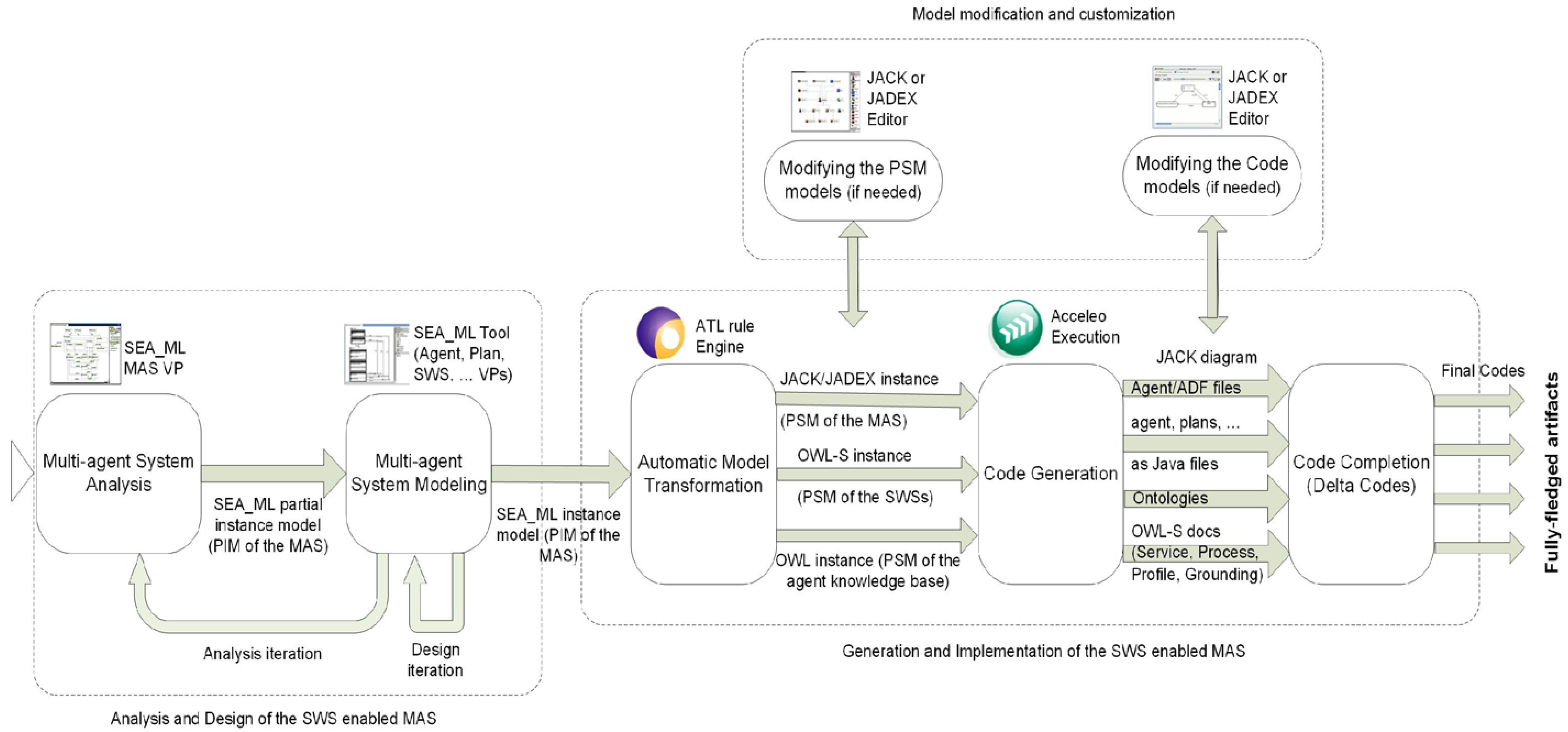
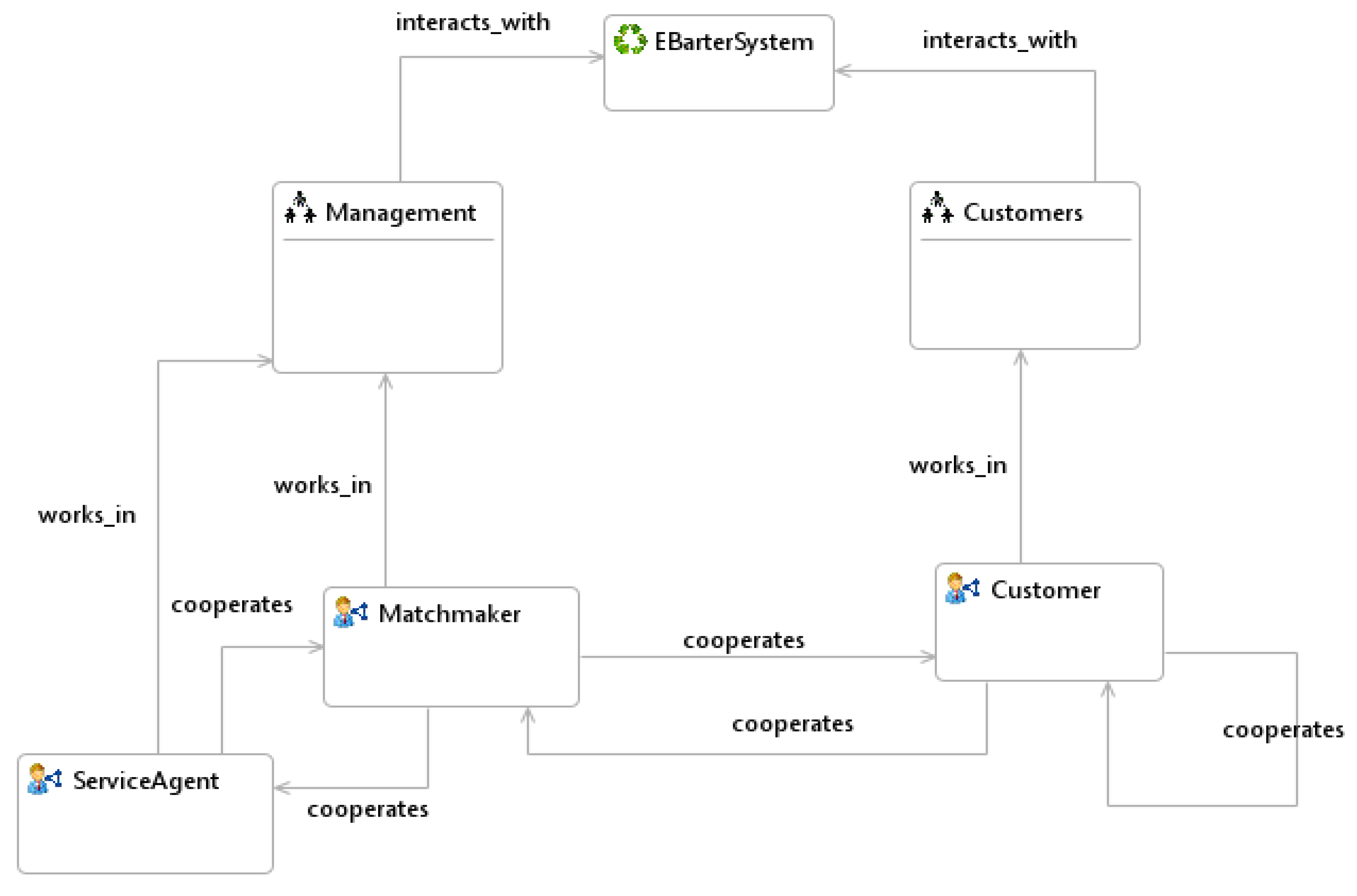
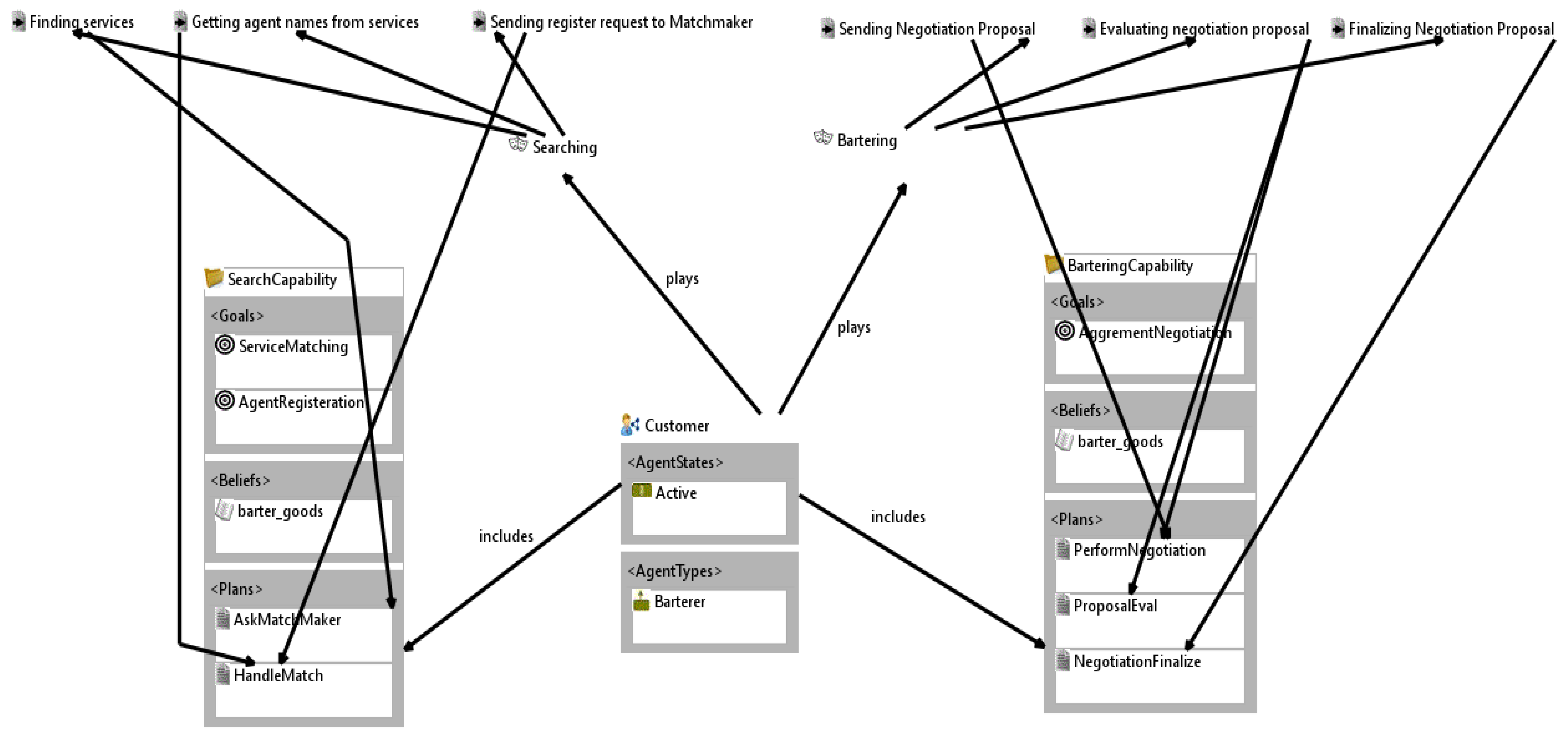

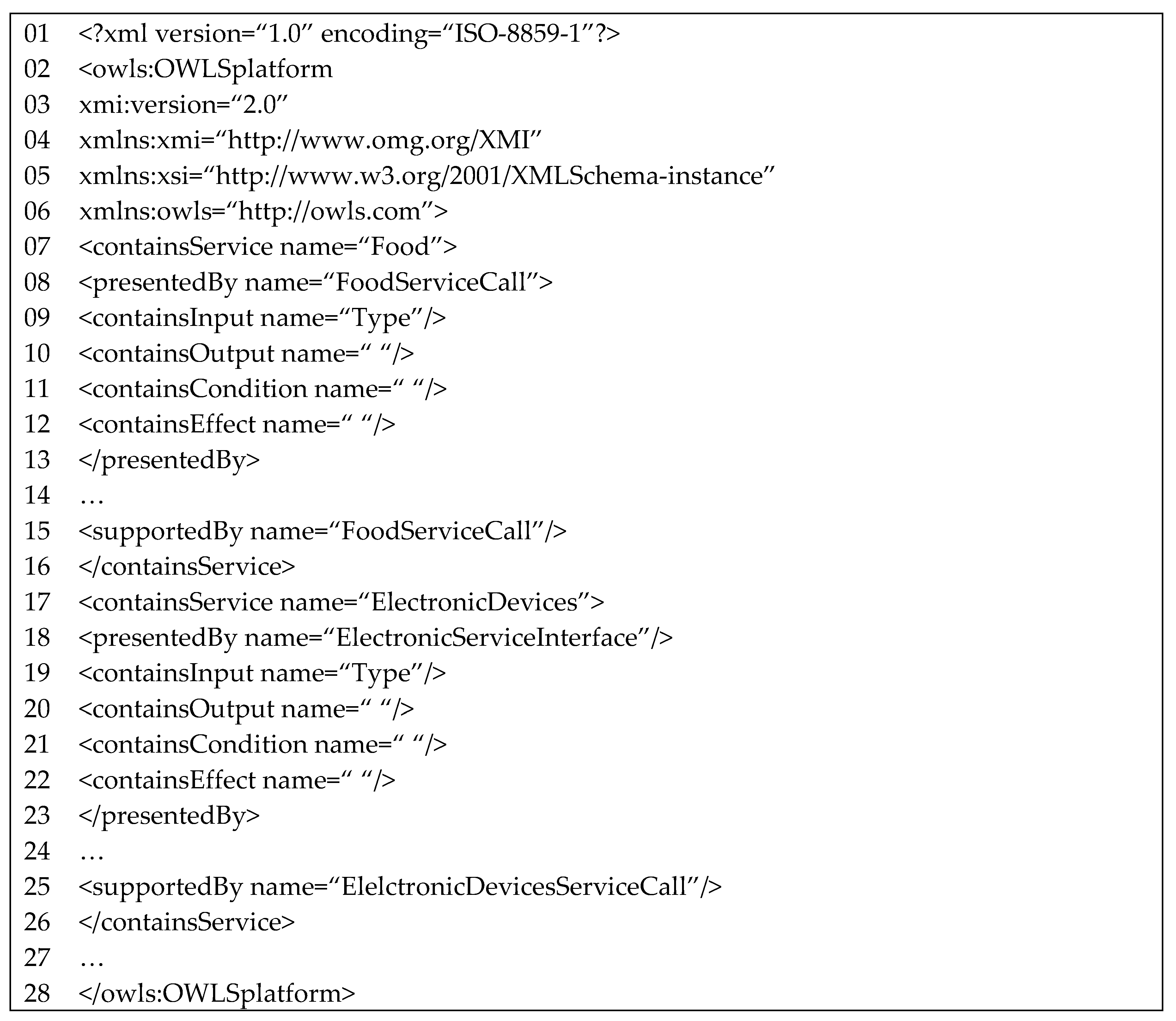
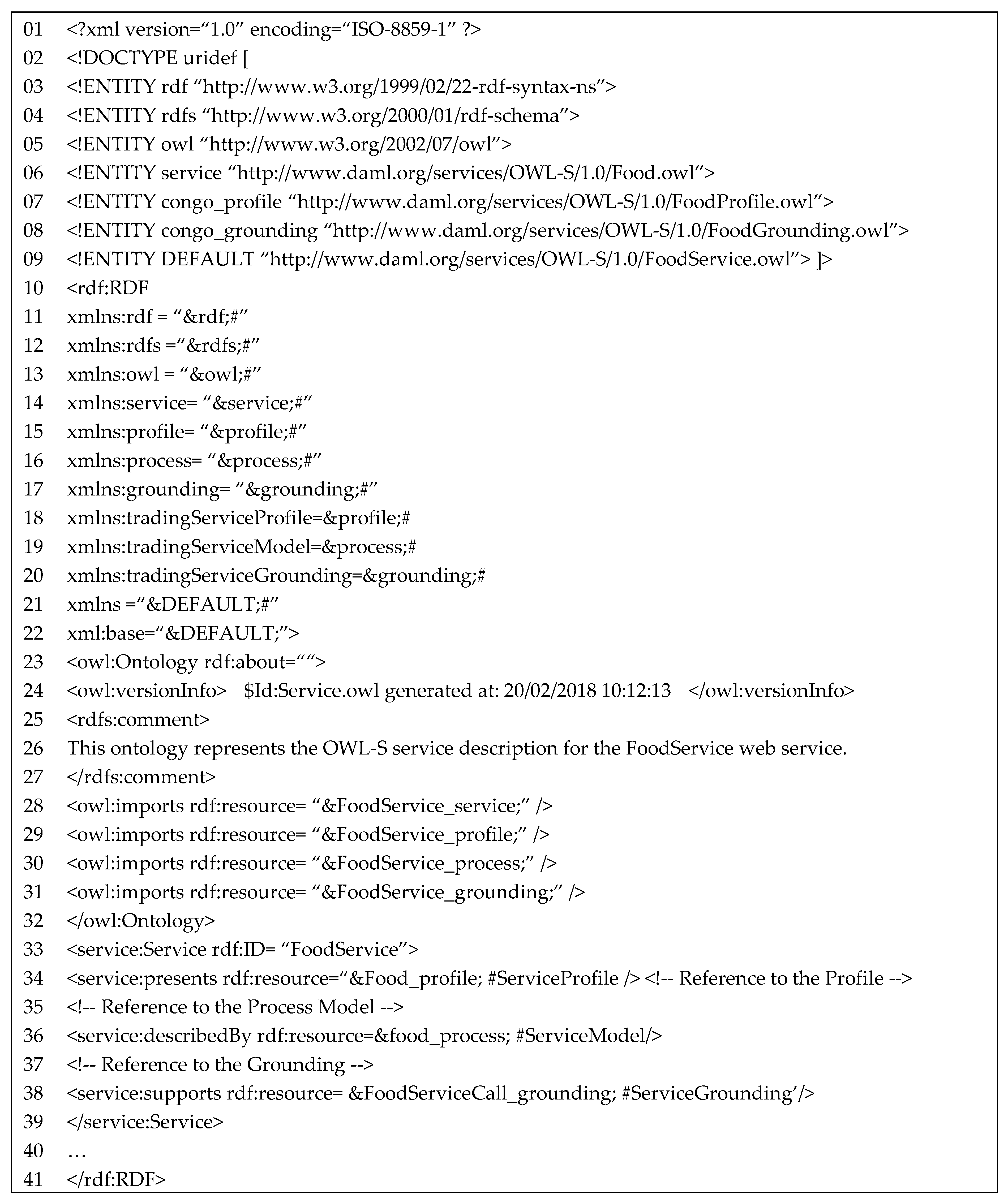

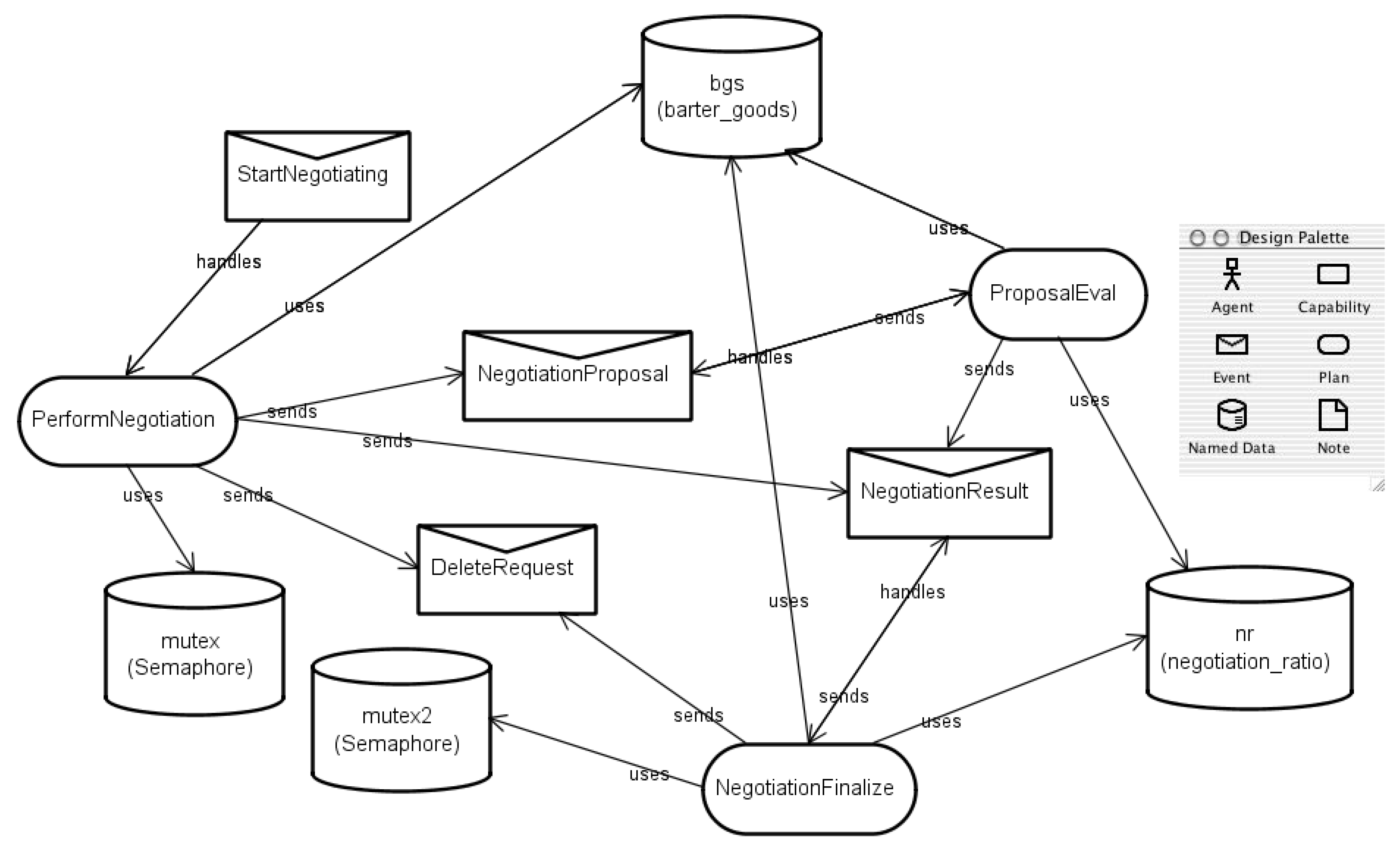
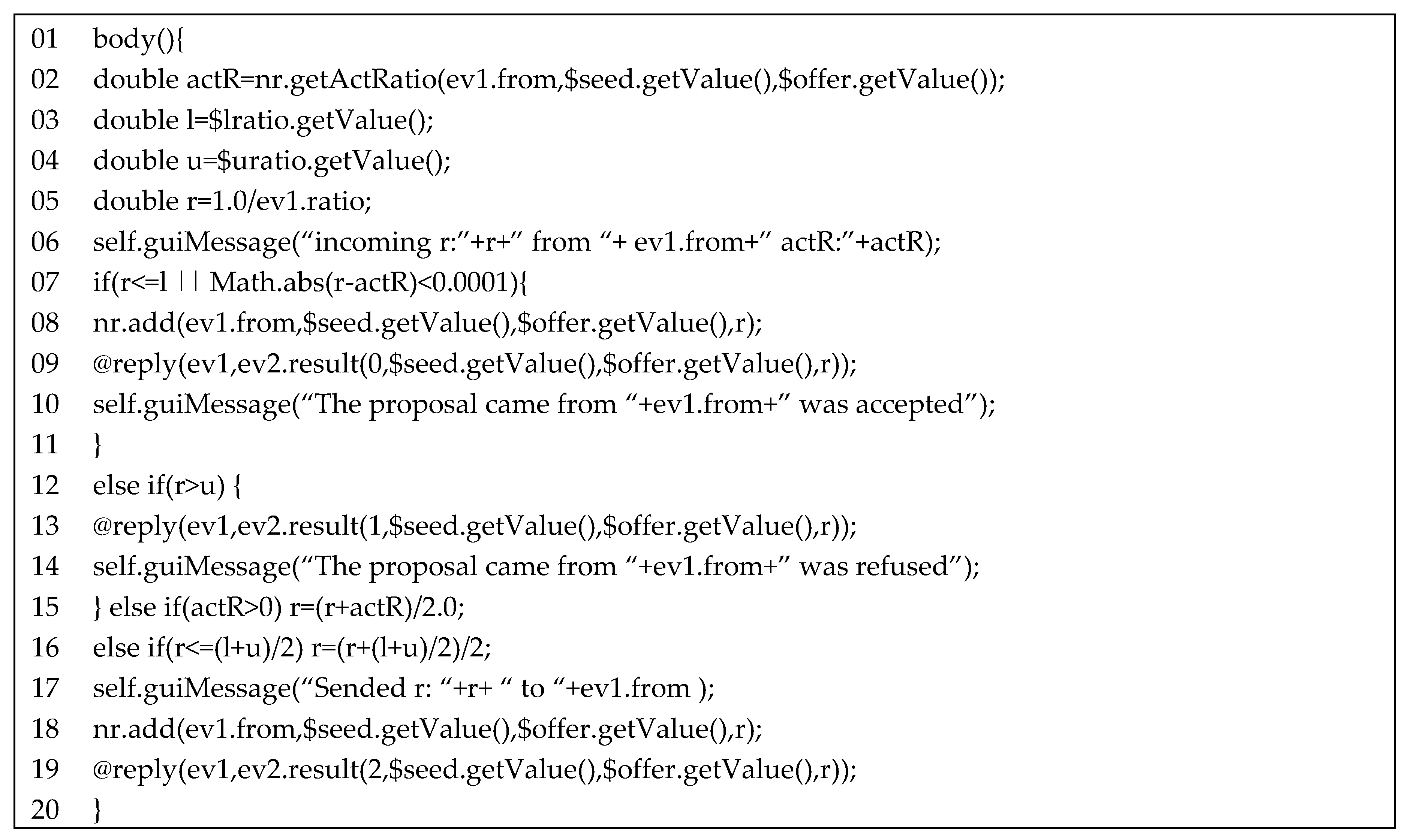
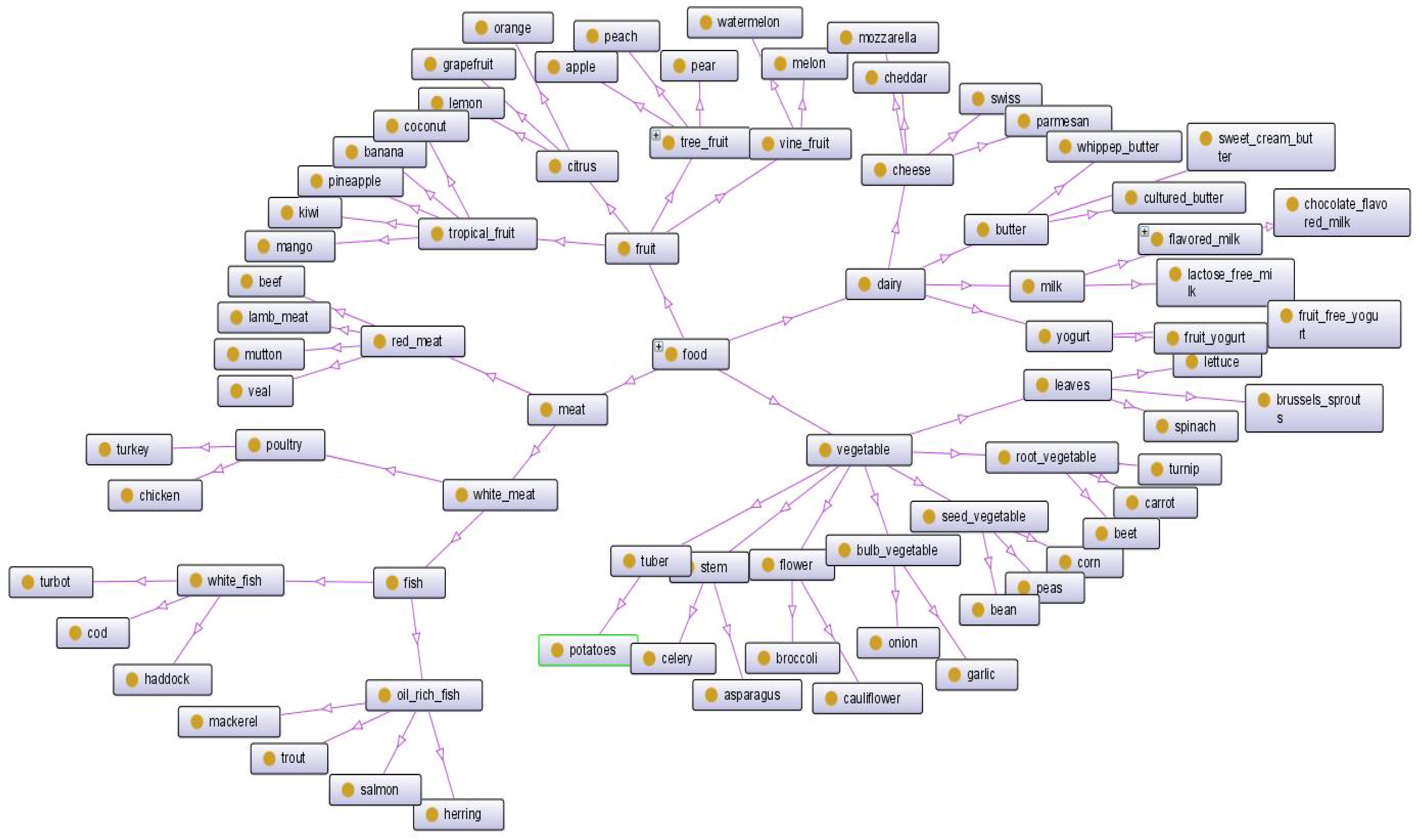


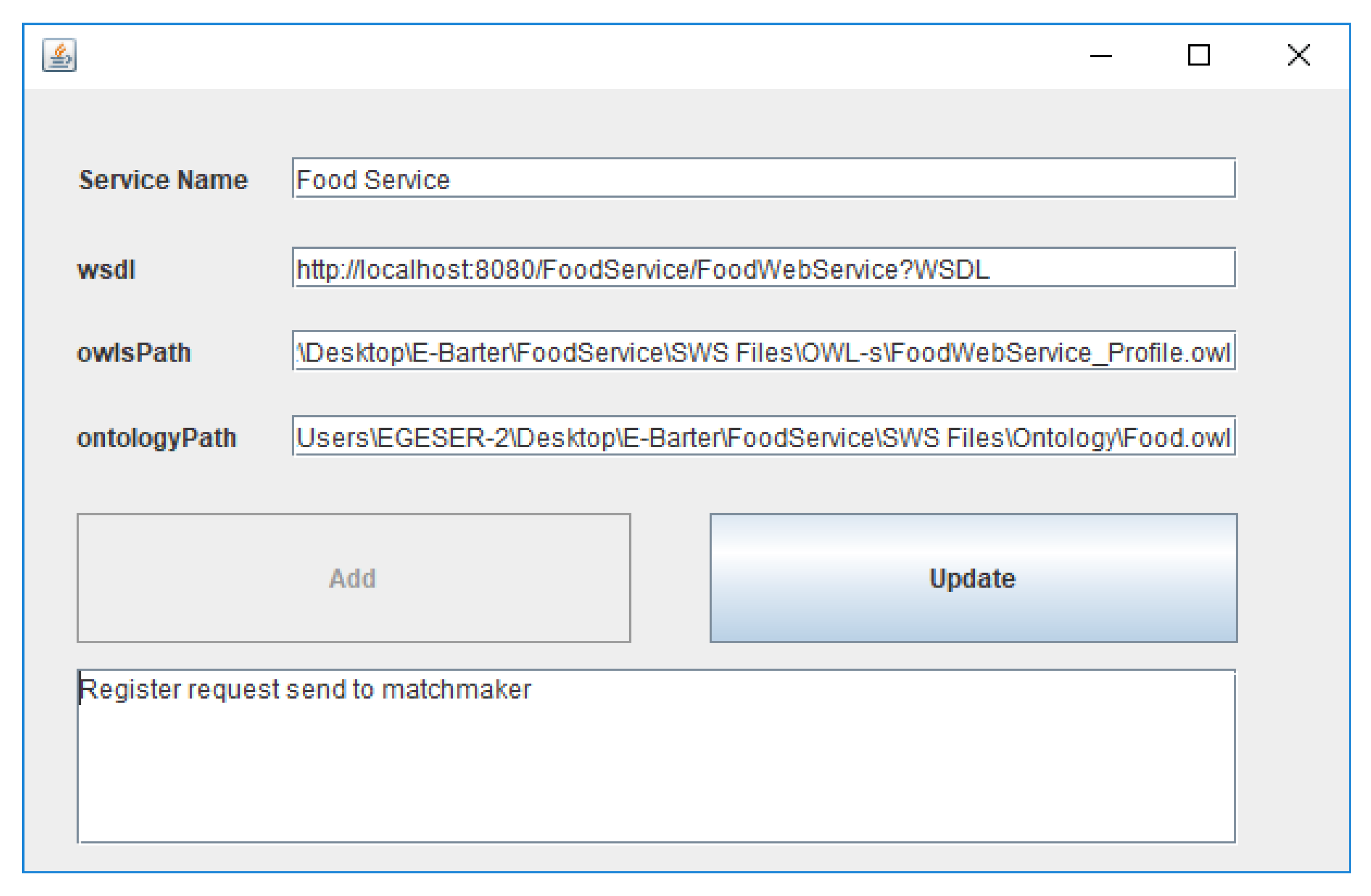
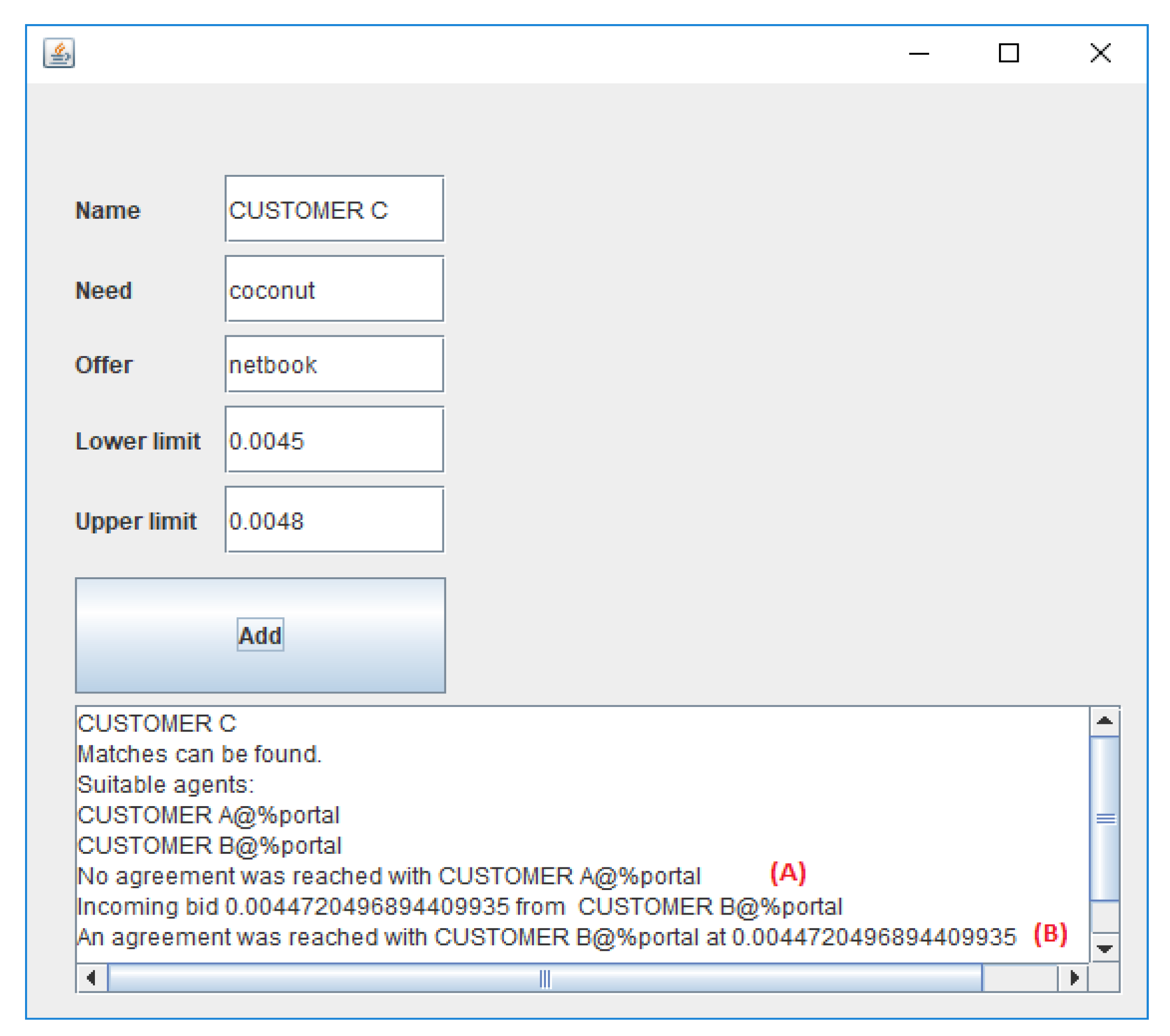
| Name | Need | Offer | Lower Limit | Upper Limit |
|---|---|---|---|---|
| CUSTOMER A | netbook | Coconut | 150 | 200 |
| CUSTOMER B | netbook | Coconut | 200 | 250 |
| CUSTOMER C | coconut | Netbook | 0.0045 | 0.0048 |
© 2018 by the authors. Licensee MDPI, Basel, Switzerland. This article is an open access article distributed under the terms and conditions of the Creative Commons Attribution (CC BY) license (http://creativecommons.org/licenses/by/4.0/).
Share and Cite
Challenger, M.; Tezel, B.T.; Alaca, O.F.; Tekinerdogan, B.; Kardas, G. Development of Semantic Web-Enabled BDI Multi-Agent Systems Using SEA_ML: An Electronic Bartering Case Study. Appl. Sci. 2018, 8, 688. https://doi.org/10.3390/app8050688
Challenger M, Tezel BT, Alaca OF, Tekinerdogan B, Kardas G. Development of Semantic Web-Enabled BDI Multi-Agent Systems Using SEA_ML: An Electronic Bartering Case Study. Applied Sciences. 2018; 8(5):688. https://doi.org/10.3390/app8050688
Chicago/Turabian StyleChallenger, Moharram, Baris Tekin Tezel, Omer Faruk Alaca, Bedir Tekinerdogan, and Geylani Kardas. 2018. "Development of Semantic Web-Enabled BDI Multi-Agent Systems Using SEA_ML: An Electronic Bartering Case Study" Applied Sciences 8, no. 5: 688. https://doi.org/10.3390/app8050688
APA StyleChallenger, M., Tezel, B. T., Alaca, O. F., Tekinerdogan, B., & Kardas, G. (2018). Development of Semantic Web-Enabled BDI Multi-Agent Systems Using SEA_ML: An Electronic Bartering Case Study. Applied Sciences, 8(5), 688. https://doi.org/10.3390/app8050688








